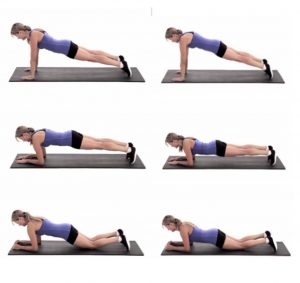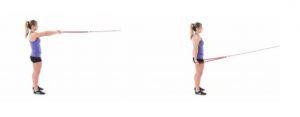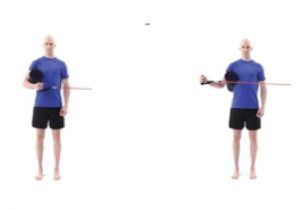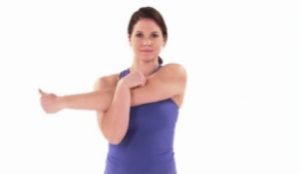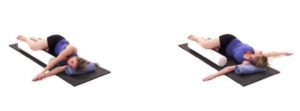Top 5 exercises to protect your shoulder
The shoulder is one of the largest and most complex joints in the body. There are certain muscle groups that are needed to provide the shoulder stability and help it perform at its most optimal level. The following exercises are designed to focus on stabilizer muscles that are often missed with most training programs. These muscles include the serratus anterior, rotator cuff complex, and lower trapezius. In this blog, I will give a brief description of each muscle group followed by exercises that can be done to help strengthen them.
Serratus anterior activation is needed in order to keep the shoulder blade stable. The function of the serratus anterior muscle is to allow the forward rotation of the arm and to pull the shoulder blade (scapula) forward and around the rib cage. The serratus anterior muscle also allows the upward rotation of the arm, which enables a person to lift items over their head.
The rotator cuff is a muscle group composed of the supraspinatus, infraspinatus, teres minor, and subscapularis. All four of these muscles are major players and have to work together in order to provide stability to prevent injuries such as impingements and rotator cuff tears.
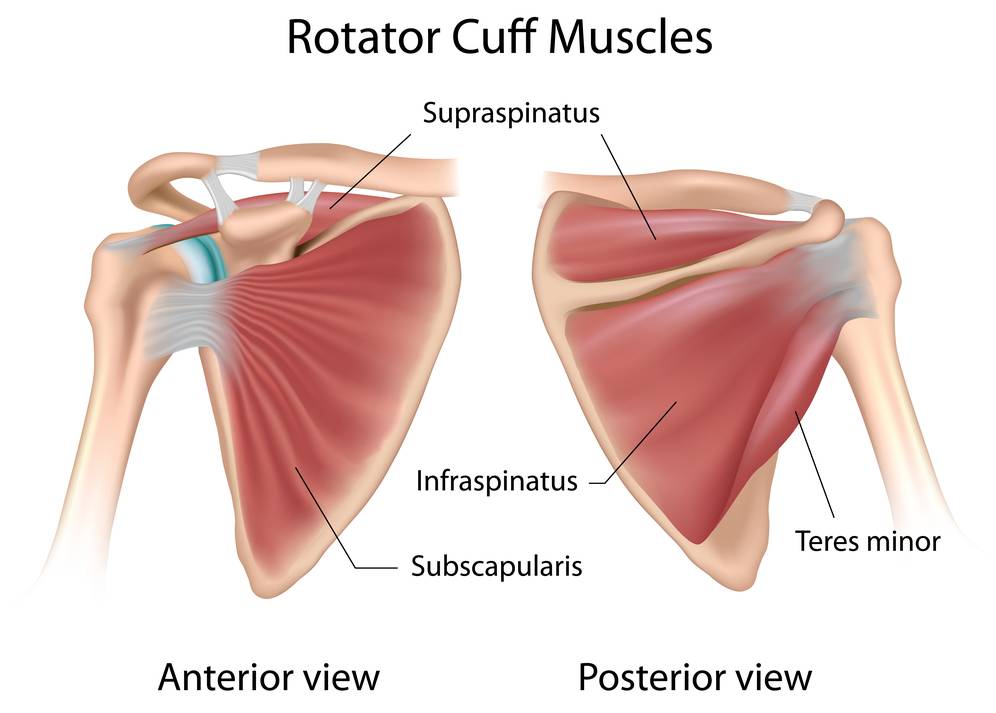
Lower trapezius activation ensures a stable base, which allows the shoulder joint to move freely and effectively. As well, the lower trapezius promotes scapular depression which is helpful in preventing impingement when reaching overhead.
The following are exercises designed to focus on these 3 muscle groups.
Push up plus
Setup
- Begin on all fours with your arms straight under your shoulders. Below are pictures of modified positions depending on strength.
Movement
- Raise your body into a plank position. Slowly round your upper back, pulling your shoulder blades apart. Hold briefly, then lower back down, squeezing your shoulder blades, and repeat.
Tips
- Make sure to keep your back flat and maintain a gentle chin tuck. Do not shrug your shoulders during the exercise. This will keep your upper traps from activating.
- You can modify this exercise by weightbearing through your forearms rather than your hands. This is an easier “plank” and will decrease wrist stress.
Setup
- Begin in a standing position holding both ends of a resistance band anchored in front of you with your arms straight in front of your body. Bands can be purchased at most sporting good stores, Wallmart, or online.
Movement
- Keeping your elbows straight, pull your hands down toward your hips. You should feel your shoulder blades go down. Return to start and repeat.
Tips
- Make sure to maintain good posture during the exercise and do not shrug your shoulders. Keep your hips under your shoulders; don’t allow them to move forward. Try to perform exercise in front of a mirror to make maintain posture. If it is difficult to maintain posture try the exercise in a sitting position.
Shoulder Internal and external rotation
Setup (Internal rotation)
- Begin standing tall with your elbow bent to 90 degrees and a towel roll tucked between your elbow and side, holding the end of a band that is anchored on the same side.
Movement
- Move your hand in towards your body, bringing your hand to your stomach. Return to the starting position and repeat.
Tip
- Do not shrug your shoulder or let your trunk rotate during the exercise.
Setup (External rotation)
- Begin in a standing upright position with your elbow bent at 90 degrees and a towel roll tucked under your arm, holding a resistance band. The anchor point should be on the side furthest away from your bent arm.
Movement
- Slowly rotate your arm out to the side.
Tip
- Make sure to keep your hips and shoulders facing forward and maintain a gentle chin tuck throughout the exercise.
For optimal performance the shoulder also needs mobility. It is common for the posterior (back) part of the shoulder to be tight. This prevents the shoulder from rotating down as the arm elevates creating decreased space and can cause subacromial impingement. If the thoracic spine mobility is limited, it can make it difficult to raise your arms over your head without compensating movement somewhere else in the body. The next two exercise focus on improving the shoulder and thoracic spine’s ability to move the upper extremity through full range of motion.
Posterior capsule stretch
Setup
- Begin in a standing upright position.
Movement
- Raise one arm in front of your body, with your thumb pointing up. Grasp the outside of your arm with your other arm and apply a gentle pressure until you feel a stretch.
Tip
- Make sure to maintain good posture during the exercise. Try to feel the stretch in the back part of your shoulder.
Open book/Thoracic extension
Setup
- Begin lying on your side with your bottom leg straight, and your top leg bent at 90 a degree, resting on a foam roll or pillow. Your arms should be straight and together in front of you on the ground.
Movement
- Slowly move your top arm away from your other arm, bringing it to the floor behind you, and rotating your upper trunk. Next, bring your arms back together, and repeat.
Tip
- Make sure to keep your top leg on the foam roll. Remember this is not a shoulder exercise, it is an upper back exercise.
Remember that all of these exercises should be pain free and are done for prevention of injury. If an injury does occur see your doctor or physical therapists for a more thorough evaluation so an individualized plan can be made.
To see videos of the exercises above type the following code into our patient portal.
Access Code: 4VC3TLPR
Patient Portal: advantagerehab.medbridgego.com/
